
Austen Chat: Episode 20
February 7, 2025
Jane Austen in the Garden: A Visit with Kim Wilson
"To work in his garden was one of his most respectable pleasures."
—Pride and Prejudice
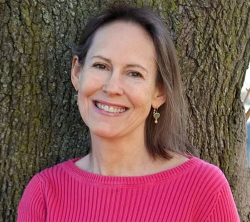
The garden may be where Charlotte sends Mr. Collins when she tires of him, but for many of Jane Austen's heroines, it's a place of repose and reflection. Nature is an important and recurring theme in Austen's novels and a meaningful part of her own life. In this episode, author Kim Wilson takes us on a tour of the many types of Regency-era gardens and greenery that inspired Austen and her work.
Two ways to enjoy this episode:
- Watch the video version on our YouTube Channel.
- Listen to the episode on your favorite podcast app or use the player below. The audio episode is a slightly abridged version of the video, and a selection of the images discussed in the episode can be found in the transcript below.
Kim Wilson is a writer and speaker, a life member of JASNA, and a past regional coordinator for JASNA's Wisconsin Region. Kim has presented at several AGMs and was a 2023/2024 JASNA Traveling Lecturer. She is the author of At Home with Jane Austen, Tea with Jane Austen, and In the Garden with Jane Austen.
Show Notes and Links
Many thanks to Kim for being a guest on Austen Chat!
- Learn more about Kim and her work on her website: kimwilsonauthor.com
- Recreating Jane Austen's Garden (Video): Watch this 10-minute video created for JASNA's 2020 Virtual AGM and get inspired to create your very own “Jane Austen garden” on a suburban acre, in a small town garden, or the balcony of a city apartment.
Related Reading
- "Jane Austen and Her Outdoors" by Lisa Altomari. Persuasions No. 12 (1990): 50-53.
- "Salutes and Satire in Jane Austen's Characters' Sense of 'Nature'"by Richard Quaintance. Persuasions No. 19 (1997): 219-225.
- “Wilderness and Shrubbery in Austen’s Works” by Robert Clark. Persuasions On-Line, Vol. 36, No. 1 (Winter 2015).
![]() Listen to Austen Chat here, on your favorite podcast app (Apple Podcasts, Spotify, and other streaming platforms), or on our YouTube Channel.
Listen to Austen Chat here, on your favorite podcast app (Apple Podcasts, Spotify, and other streaming platforms), or on our YouTube Channel.
Credits: From JASNA's Austen Chat podcast. Published February 7, 2025. © Jane Austen Society of North America. All rights reserved. Images: All images are copyrighted by Kim Wilson or in the public domain unless otherwise specified. Theme Music: Country Dance by Humans Win.
Transcript
This transcript has been lightly edited for clarity and readability. All images are copyrighted by Kim Wilson or in the public domain unless otherwise specified.
[Theme music]
Breckyn Wood: Hello, Janeites, and welcome to Austen Chat, a podcast brought to you by the Jane Austen Society of North America. I'm your host, Breckyn Wood from the Georgia Region of JASNA. Listeners, depending on where you are in the world, you may be enjoying the loveliest of sunny weather right now. But if you are in the northern hemisphere, like I am, you are likely still languishing in winter's cruel grasp. To help dispel some of that chilly gloom, I have invited Kim Wilson to talk with us today about nature and gardens in Austen's life and work. Kim Wilson is a writer and speaker, a JASNA life member, and past Regional Coordinator for JASNA Wisconsin. She has presented at several previous AGMs, and she was a JASNA Traveling Lecturer for the 2023-2024 year. She is the author of At Home with Jane Austen, Tea with Jane Austen, and In the Garden with Jane Austen. Welcome to the show, Kim.
Kim Wilson: Hi, Breckyn, thanks for having me.
Breckyn: Okay, to start off, we're going to play an Austen version of Would You Rather? To go along with today's garden theme, I've picked an outdoorsy question for you. Would you rather stroll the Cobb at Lyme Regis, with its beautiful line of cliffs and extensive sweeps of country, or ride on horseback around the fine spots and shady lanes around Mansfield Park?
Kim: That's a good one. I think I'm going to pick the Cobb at Lyme. I'm from Seattle originally, and so anything on the coast and the seaside really speaks to me, which I actually think it spoke to Austen, too, judging by her comments. In fact, when I look at the descriptions of the scenery in her books, she does not spend a lot of time on it. Her contemporary authors would just wax on and on about scenery and the beauty of it, and half the time they had never seen it—the beauties of Switzerland or something. But the one place where she just gets, I think, lyrical is in her description of the scenery around Lyme, going on about the cliffs and the sweet retired bay, scattered forest trees, and orchards of luxuriant growth. What does she say? “It's wonderful and lovely.” Anyway, I'm on board with that.
Breckyn: That's interesting. I think it is a little bit unusual for her because Austen is very much an author of the mind and of the interior, and so when she does start describing anything external, like how people look or how a scene looks, you kind of pay attention because you're like, "Oh, we don't usually get this many details.”
Kim: No. I'm grateful for it. Often we're thinking, well, she never describes dress, or she doesn't describe how people look always very well. But when you read her contemporaries, they will just come to a screeching halt and throw in 20 pages of backstory or descriptions, like I said, of Swiss mountains. It makes her just fresh and modern, and as you said, of the mind. So, when it's there, I think it's important. I think it means something to her.
Breckyn: I agree. Okay, so, Kim, Jane Austen loved gardens and the outdoors. She talks about it in her letters, and nature is an important theme in her books; even if she doesn't spend pages and pages describing it, it comes up a lot. What gardens and nature would Austen have been most familiar with?
Kim: Well, pretty much everything. Because of her position in society, which is one of the minor gentry, she knew everything from wretched little cottage gardens, where she—as one of the ladies of a village in Steventon or Chawton, she would be dispensing charity like Emma does to the villagers in Emma—all the way through her own family gardens, parsonage gardens, cottage gardens, small manor houses, up to grand estates like her brother had at Godmersham and Chawton. Possibly she may have visited even Chatsworth—estates that would have been the inspiration for the great estate of Pemberley. She would have been exposed to all of it, and we see that reflected in the novels.
Breckyn: Yeah. And do you have some pictures for us? Because I know in descriptions of your books, everyone's talking about how gorgeous all the images in your books are, and I think you have some for us today. Is that right?
Kim: I do. I do. How do I—there we go. Yes. Okay.
Breckyn: I do want to mention—sorry, really quick, just because—for people listening on the audio, this is a video episode as well. Kim has all of these gorgeous images, so if you want to see all the images we're talking about, they'll be in the—I think we can include them in the show notes, but definitely head over to YouTube because she's got all of these amazing images, both modern photography of these Austen sites but also 18th century contemporary images that were drawn and painted.
Breckyn: Ooo . . . Cottage gardens.
Kim: Can you see that?
Breckyn: I can see it. Yes. "Rose," "Blush," and then a word I can't say.
Kim: Noisette. That's the variety that they grow. That's the kitchen door at Chawton Cottage [Figure 1].
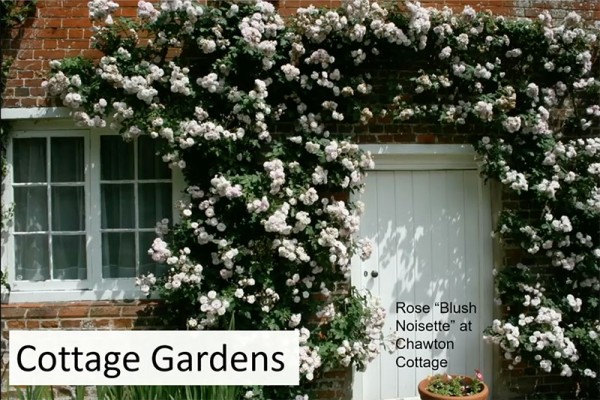
Figure 1. Kitchen Door of Jane Austen's House/Chawton Cottage
Breckyn: That is so gorgeous. I feel like the overlap between people who like Jane Austen and people who like Lucy Maud Montgomery and Anne of Green Gables is like almost—in the Venn diagram, it's almost a complete circle. And that is just so Anne Shirley romantic. It just makes my heart flutter seeing that doorway.
Kim: Yes, I think you're right. If you have, like, gardens and tea and—for a lot of people, kitties—I mean, it's all just very—we're all very tucked in there. Austen, of course, the predominant influence.
So, looking first at cottage gardens, this is what I'm talking about [Figure 2]. This is the actual sort of—when we think of a cottage garden, it wasn't the romanticized thing that the people—the gentry thought in Austen's day that, if you lived in the country, it must be a cottage, but mostly these were laborers' cottages. And, so, not very fancy, but she definitely would have seen those in all the villages. And these appear—Maria Bertram talks about how disgraceful the cottage gardens are. It's Mr. Rushworth's estate. He's responsible for those. So that's a true cottage garden with its pathetic little coffin there. At the other end, this is what Robert Ferrars is quacking on about a cottage, these cottage ornées. [Figure 3] This is not very far from Chawton, actually. This is reminiscent of the cottage in Persuasion, Uppercross Cottage, where they elevate it and put a veranda on it and pretty little French windows, Gothic windows.
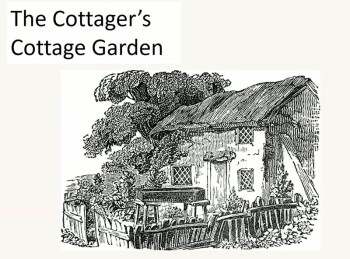
Figure 2. The Cottager's Cottage Garden |
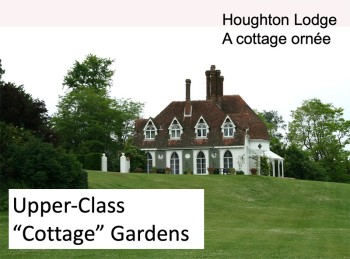
Figure 3. Houghton Lodge, a Cottage Ornée |
These are Ackermann prints showing the cottage that you could build in the countryside [Figure 4].
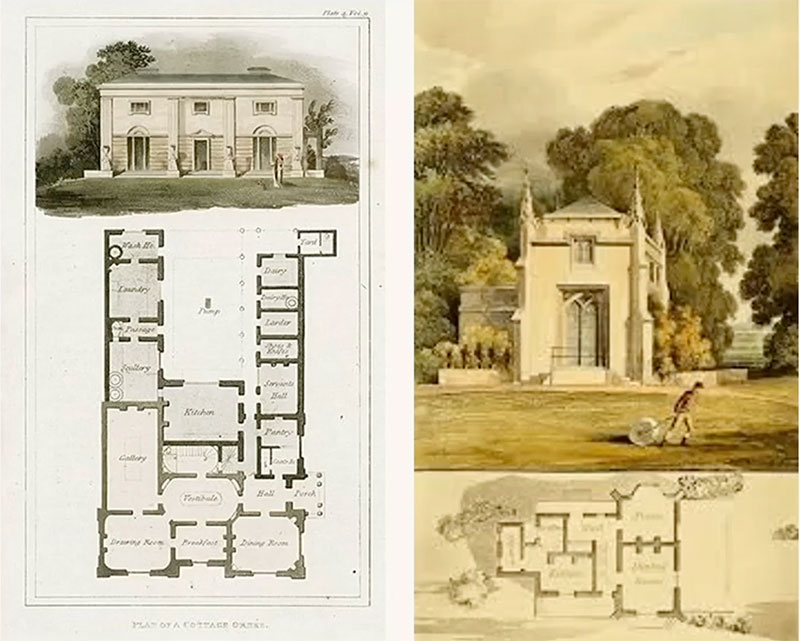
Figure 4. Ackermann Prints of Plans for Building an Upscale Cottage
And so, again, these are cottages for the gentry. Here's again at Houghton Lodge [Figures 5]. They filmed this, a lot of things there, like David Copperfield, and The Buccaneers, and things like that. So, you'll recognize that. That's the entrance to the shrubberies [Figure 6]. We can talk about shrubberies later.
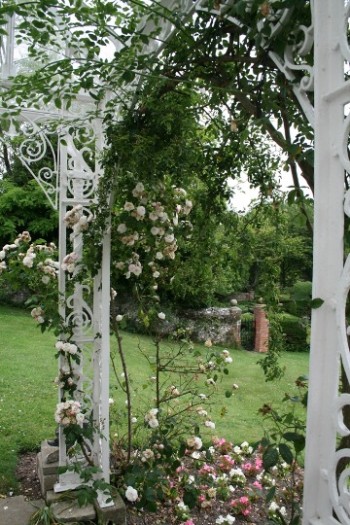
Figure 5. Houghton Lodge |
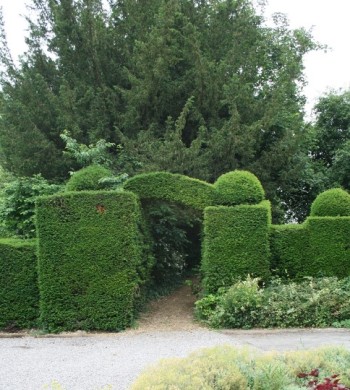
Figure 6. Entrance to the shrubberies, Houghton Lodge |
Breckyn: I love the word shrubbery. I really hope we're going to talk about shrubberies. Maybe it's just because of Monty Python.
Kim: Yes. “I'd like a shrubbery, not too large,” but that, actually, is what set me off to write this book because I was dying to know what a shrubbery was.
Breckyn: Really? That’s awesome.
Kim: And the same with the tea book and the recipes. I was like, "What on earth is a rout cake?" I'm always answering my own questions. But I thought we mostly would like to look at the Austen family gardens. So, we have the laborer's cottage garden, very low, the fanciful Marie Antoinette, the Petit Trianon, level of the upper classes. And then, in between, the Austens—their gardens were fit for gentry. We call this Chawton Cottage—this is Jane Austen's House museum there [Figure 7]—but they were in between. You'd have parsonage gardens, for example, could count as a cottage garden.
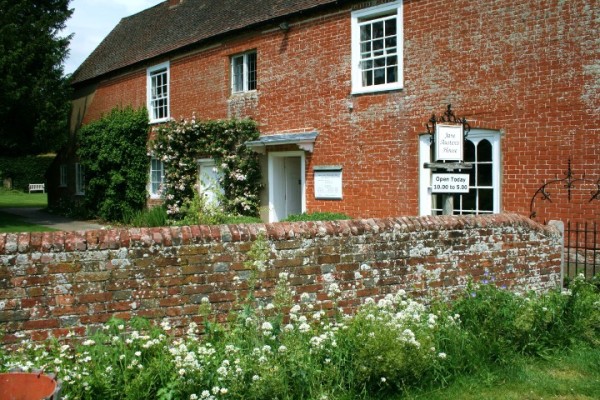
Figure 7. Chawton Cottage/Jane Austen's House
This is where Jane Austen grew up in Steventon in Hampshire. Her niece drew these, and you can see simple house, they grew a lot of their own food; they're out in the countryside. The back [Figure 8], and this I love, I don't know if you can see my mouse, but this [path] led to a sundial, and they spoke about that Mr. Austen's study looked out on it, and that he could see there were strawberries lining the path. So, it was described as an old-fashioned garden, mixing flowers with vegetables, with trees and orchards. And by the Victorian time, they had pretty much decided that was not fashionable, and they had hidden all of the vegetables and things behind walls, but Jane Austen would have known the mixed garden.
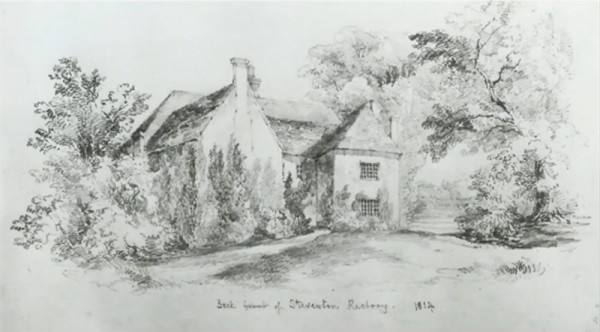
Figure 8. Sketch by Anna Lefroy of the back of Steventon Rectory
Breckyn: That's gorgeous.
Kim: The site of that house now looks like this [Figure 9]. If you want to have some fun, you can go on Google Maps and go down the road and walk by. I always picture if you go and stand in the corner of this field and you see people longingly looking into the field, that's us, staring where the house—so by that tree. What I'm showing is the empty field where, sadly, the Austen parsonage was pulled down, and now it's inhabited by cows. Although it was so cute that—I've read in the 1880s that people could still see flowers coming up through the grass, that they knew had been there from the parsonage site.
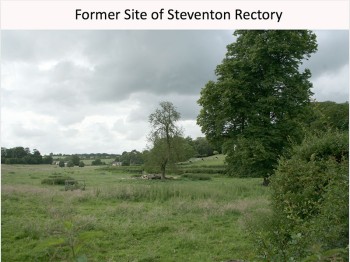
Figure 9. Site of Steventon Rectory |
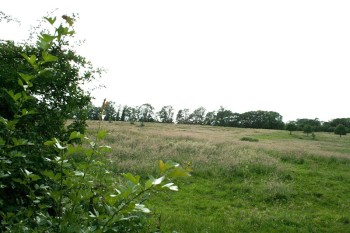
Figure 10. Hill behind former Steventon rectory |
Breckyn: From Austen's time.
Kim: Kind of a ghost garden. There's the site there again. That little wooden structure surrounds the well that was at the back of the house. So, no garden now, just farmland. But to me, what's significant is this feature here [Figure 10]. This is the hill that goes up toward the church, and it reminds me exactly of Catherine Morland in Northanger Abbey rolling down the hill. She liked to do that, and I picture Jane Austen doing the same thing.
Breckyn: All her tomboyish pursuits.
Kim: Yeah, I think so. If you grow up with that many brothers, you're going to be, right?
The reason I'm showing—I have here a picture of the church at the top of the hill [Figure 11], and that yew tree is significant to me because I started thinking—we were talking about gardens and how they relate to the 250th anniversary of her birth, and I thought, "What still exists?" Often the outline of the garden is known but the plants are different, or at Chawton Cottage, for example, we'll see they grow 18th century varieties but they don't know the plan. So not everything is there but some trees were. And so that yew tree, which is thought to date to about the same time as the church, like 1200, was there definitely—probably about the same size when Austen was there. Just to show you, to give you an idea of the size, this is my daughter when we visited, and it's big enough—there's hollows that you can play in. And I picture the Austen children playing in it [Figure 12].
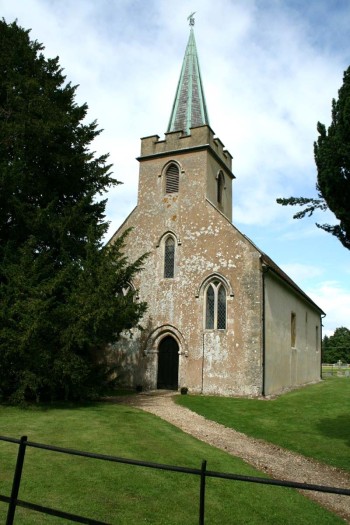
Figure 11. St. Nicholas Church with Yew Tree |
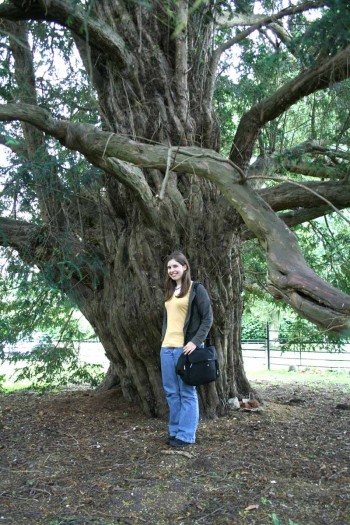
Figure 12. Ancient Yew Tree in front of St. Nicholas Church |
Breckyn: Definitely. The Austen boys, if not Austen herself, were climbing those branches because they're so low. You can just—I mean, who doesn't want to climb that tree? I want to climb that tree.
Kim: It's partially hollow. To me, even though it's not strictly in the garden, it's a tree, and we can walk up to it and think, "Jane Austen touched this tree."
Breckyn: Amazing.
Kim: I know. Anyway...
Breckyn: You've got Chawton Cottage up on the screen right now, which—I know that Cassandra had trees, right? She had an orchard. What was Jane's involvement in the garden?
Kim: Well, I get the impression that, just like Cassandra, her sister, was more involved in the housekeeping, and they may have just let Jane alone to do her writing. I don't think Jane Austen herself was terribly involved. I know she mentions it. She mentions what they're growing. Jane and Cassandra's brother, Edward—this belonged to his estate at Chawton House, which we can look at. And he had this fixed up for them, to turn it into more of a gentlewoman's cottage. His steward lived there. But there's records in the Chawton House estate records talking about him having the garden trenched and dug over. So, I assume they're putting in mulch and compost and that sort of thing. He put in an orchard. He put in a nice vegetable garden. He put in a gravel walk through a shrubbery.
So, here are the yews. Again, you run up and touch the yews and think, "Did Jane Austen touch those?" They have an oak that they grow there, too, that the whole village said that she planted. Jane Austen herself planted an oak, but no one can prove it. Well, then it got diseased and was cut down in 1986, and they saved a seedling, and that's what's growing there now. Again, it's what could be. So, they grow—the gardener, Celia Simpson, is just a marvel. She grows 18th-century varieties where she can, so almost everything you see there, these roses, for example, are period [Figure 13].
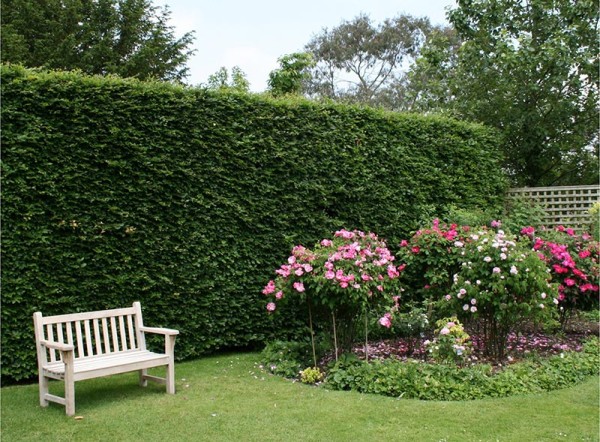
Figure 13. Period roses at Jane Austen's House
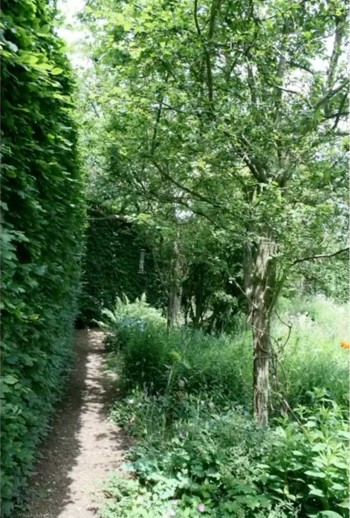
Figure 14. Shrubbery walk at Jane Austen's House
This is a recreation of sort of a shrubbery that Jane's brother Edward put in [Figure 14]. And the important feature—you're talking about, "What is a shrubbery?" A shrubbery is basically a group of shrubs—obviously—flowers, trees, and with a path. The important thing is that you have a path, preferably gravel—something to keep your feet dry. So, think of Mr. Woodhouse worrying about Jane Fairfax. "My dear, did you get your stockings—did you change your stockings?" People thought the madness of King George developed when he didn't change his stockings after they got wet. So, almost every garden near the house—if they had a shrubbery, that would have gravel paths, and that would be safe. Like Marianne Dashwood, if you look in the book, she's wandering around in the grass, wild grass. She gets her feet wet.
Breckyn: And that's why she almost dies.
Kim: That's why she almost dies. She did not have a shrubbery. Or she didn't stay in the shrubbery.
Breckyn: That's where the gentlewomen and the old hypochondriac men are walking. Okay, so, actually, that casts new light on Elizabeth Bennet just walking across the muddy countryside three miles. That's not what a gentlewoman would do. She has to stick to the gravel pathways.
Kim: Yeah, and, you know, the country women would. I mean, Austen obviously would have done things like that. You take off cross country. Fancy city ladies like the Bingleys wouldn't, but in between there, it's like, well, how dirty is it, as they say? How muddy? She went right across the mud, right after rain, and that just shows she's young and vigorous. But you even see Austen talks—she wrote to one of her nieces, Anna, critiquing a novel. And she talked about the girl was walking outside in the damp. And Jane Austen said, "No, you better take that out. An anxious mother wouldn't suffer that to happen." So, this is common wisdom.
Breckyn: That's interesting.
Kim: Still, I picture Austen walking cross country a fair amount. So, this is the kitchen garden, again growing in old methods [Figure 15]. I love this one. There are seashells, supposedly as a scarecrow. They clack together, and I can't imagine it works, judging by my garden. I'm just showing pictures of the pretty things. I show this because, to me, this is a woodcut of a gentlewoman out working in the garden, and Austen makes a point of all the ladies in her books that are interested in gardens—and some surprising people, like Elizabeth Elliot in Persuasion. But I imagine her idea of gardening is mostly directing the gardener.
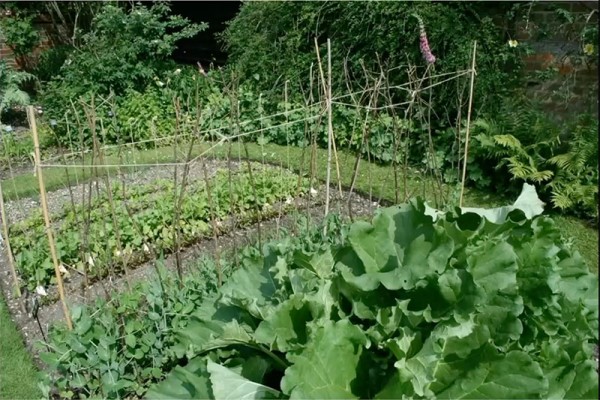
Figure 15. Kitchen Garden at Jane Austen's House
Breckyn: Sort of like Lady Bertram, too. She wants the roses cut. She's not going to do it herself. Fanny is going to do it, obviously.
Kim: No. I've heard it said that if you go through a garden—through a great big fancy garden now—with a gardener, and if you don't see dirt under their fingernails, or if they don't reach down and pick a weed, you know that they actually didn't do it. Mrs. Austen did her own gardening. She dug her own weeds, she dug potatoes. That was quite a thing for her. It was like Mr. Collins.
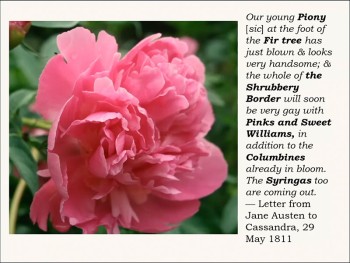
Figure 16. Jane Austen describes the plants blooming in the Austen garden in a May 29, 1811 letter to Cassandra. "Our young Piony at the foot of the Fir tree has just blown and looks very handsome; & the whole of the Shrubbery border will soon be very gay with Pinks & Sweet Williams, in addition to the Columbines already in bloom. The Syringas too are coming out.”
We know the Austens kept bees in their garden to make mead. And then Austen—this is where I do see Jane Austen's involvement—she talks about what flowers are blooming, what they're planning to plant. So, this is one of my favorite quotes [Figure 16], where she talks about the young “piony”—this is at Chawton Cottage—is just coming into bloom and that the shrubbery is going to be "gay with Pinks and Sweet Williams" and columbines. And then I have to point out that syringa— if you ever read this, gardeners will say syringa is a lilac, but in those days it actually was mock orange. So, when Austen speaks of—
Breckyn: I don't know what that means.
Kim: I have a poem that she was inspired by, but Austen actually speaks of lilacs, and when she means lilacs, she says lilacs.
Breckyn: Okay. I have a brown thumb. I love looking at these pictures, but I am not good at keeping these things alive, and so I love having experts on here like you who can tell me what these kinds of flowers are, because I don't even know their names.
Kim: I have to say, though, because—I wouldn't say I have a brown thumb but I’d like to describe myself as a garden enthusiast, you know, as opposed to an expert, because that covers a multitude of sins. Well, I'm trying. And I come to it from the history point of view.
Breckyn: I'm an armchair gardener.
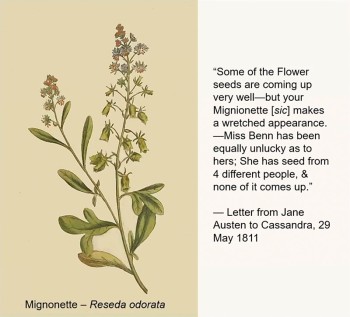
Figure 17. The Austens tried to grow mignionette. "Some of the Flower seeds are coming up very well—but your Mignionette makes a wretched appearance.—Miss Benn has been equally unlucky as to hers; She had seed from 4 different people, & none of it comes up."
Kim: Yes. Well, I'm always messing around with things. So, this is a picture [Figure 17] of a quote about the Austens trying to grow—she's writing to Cassandra, who is, I think, the main person interested in their gardens—but they're trying to grow mignonette seed, and they've got mignonette seed from Godmersham, Edward's estate—because they would pass plants and seeds and things around to each other—and nobody could get it to grow. I have done it a couple of years with my friends. I pass out mignonette seed, and we all try to get it to grow. Kind of indifferent success. It's a very common, fragrant, very unassuming little flower, but very scented—especially useful around outhouses. I have some city gardens, if you like.
Breckyn: Yeah, I wouldn't have imagined that there would be any at the time, but I guess they would still need access to vegetables and things like that. So, yeah, tell me about city gardens.
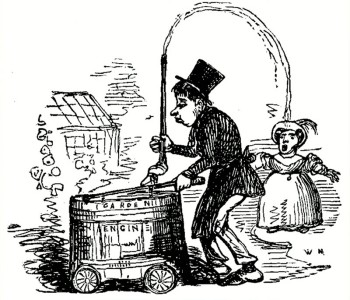
Figure 18. Garden Engine
Kim: Yeah. They would not have grown them in the town, especially London. They had to the west— Kensington, that area—there's a whole market garden area, very beautiful and lush, and a little bit more away from the London soot. This woodcut I'm showing is actually of a garden engine, they called it [Figure 18]. It's a barrel of water with a pump. Instead of—we just turn a faucet and water comes out—but you had to pump and you would hose things off. And, in cities the air was so bad they would advise syringing your flowers off. They mean hosing them off to keep the soot [off]. Actually, it was so bad that rich people would just contract to have their plants replaced. A gardener would come in—so, yes, you weren't growing your food in the city proper, but there were some nice little places. The Austens—when Jane Austen was 25, they moved to Bath. We've seen these beautiful pictures of the countryside, and then I think, "Well, how did she make do in Bath?" And you get some clues that she didn't really care for it. If you judge—Catherine Morland seems to like Bath, but Anne Elliot—
Breckyn: By the time you get to Persuasion, she's tired of it. You can tell.
Kim: Exactly. If you're forced to go live there—if you're going to go shop and go to some balls and meet some nice young men, that's one thing. But if you go from this beautiful countryside to the stony, sooty city, I think that. . .
Breckyn: It's stifling.
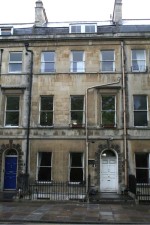
Figure 19. 4 Sydney Place, Bath.
Kim: . . . that must have been a come down. But Jane Austen wrote very enthusiastically about the fact that it would be nice to live near Sydney Gardens. So, this is where they ended up for the most part—those of you who've been to Bath—Number 4, Sydney Place [Figure 19]. And then this is the garden in the back [Figure 20]. This is a typical city garden. Gravel. Well, gravel, keep your feet dry, right? So, you’ve got to have that. And that's it. A few leaves. Here's behind their house at 25 Gay Street that they lived for about six months, and there again, those walls that you see are the extent, and then back to the alley there. That's it. But Sydney Gardens is where Austen did most of her walking, and then the countryside around Bath.
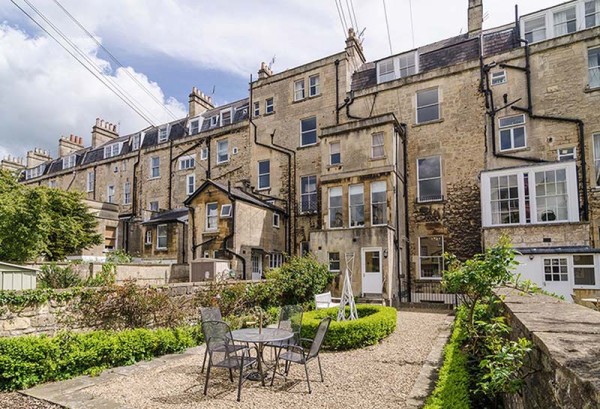
Figure 20. Back Garden of 4 Sydney Place. Courtesy of Bath Boutique Stays
This is the gravel walk leading up to another Georgian garden [Figure 21]. I just show this because this is the gravel walk where Anne Elliot and Captain Wentworth walked. So, I would like to point out that most of the important romantic scenes in the novels take place out of doors.
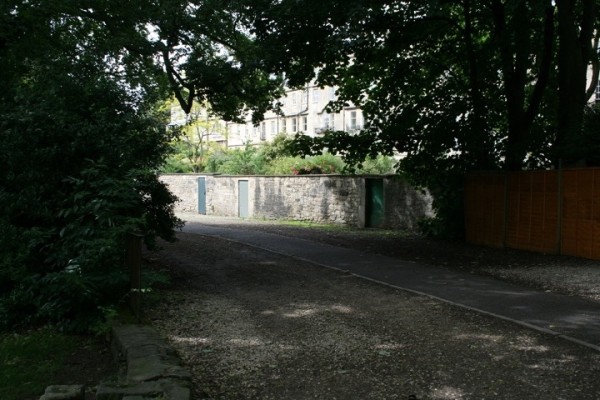
Figure 21. Gravel Walk
Breckyn: That is important. That's interesting. I would like to explore that further.
Kim: If you start looking at it—
Breckyn: Now that I'm thinking about it, and they do that in the—and sometimes the movie scenes can get blurred with the books, and you're like, "Did that only happen in the movie, or does that happen in the books as well?" But I think you're right. Definitely, Darcy and Elizabeth—they're walking outdoors at the very end when he does his second declaration. Emma—
Kim: His first declaration was indoors, and that was wrong. His second worked. The other person who proposes indoors is Mr. Collins.
Breckyn: Oh, of course.
Kim: I mean, practically within earshot of Mrs. Bennet. Yes.
Breckyn: Okay, well, now I have to go—
Kim: Mr. Knightley proposes outdoors.
Breckyn: Yeah, outdoors.
Kim: Henry Tilney, when he and Catherine walk next door to the neighbors.
Breckyn: Yes. [gasp] Kim, you've blown this wide open. I don't think I've ever noticed that before. That is wonderful. I mean, of course, it works really well for the movies because it's so gorgeous. In multiple versions of Emma, they're near a huge tree outdoors or like a weeping willow or something, and it's very romantic. [gasp] I'm going to have to read everything now.
Kim: And I have to tell you, the other thing to notice is that a lot of the interior emotional scenes of the heroines, or heroes, for that matter, take place out of doors. So, I’ve noticed that—my joking notice is that every time one of her heroines gets upset, she flings herself into the shrubbery. Emma, after she starts to think about Mr. Knightley, she goes outside. Jane and Elizabeth go outside to get away from Mrs. Bennet in Pride and Prejudice. I picture maybe Jane and Cassandra did the same thing. But every time someone's upset, they need to go outside to think, to be alone, to reflect—and Jane Austen uses the word "to indulge" their feelings. You see that word indulge over and over. And I think it is an indulgence if you're surrounded by family, servants, constant things happening, you go outside, go into the garden.
Breckyn: I love that insight. That's so great. That brings me to—I wanted to ask this question, which is, in your book you've pointed out that loving nature is a sort of litmus test of moral character in Austen's books. The good characters appreciate nature, bad ones don't. Can we get into some of those examples? Because I think that's—
Kim: Sure, sure.
Breckyn: So, one of the examples that I immediately thought of was Fanny from Sense and Sensibility, Fanny Ferris. Ferrars. No, no, no. Dashwood. Dashwood because she gets married. She used to be Ferrars, and then she's Dashwood. So, John Dashwood's wife. She's going to do a greenhouse at Norland Park, and they're going to knock down all these old walnut trees. And it says, "Elinor kept her concern and her censure to herself, and was very thankful that Marianne was not present to share the provocation." Because you know Marianne couldn't have remained silent if she heard that the walnut trees are going to be knocked down at Norland Park. And that's how you know Fanny's a bad person—because she's going to knock down these old walnut trees.
Kim: You're right, exactly. I think that Austen is inviting us to judge the character of her characters by their reaction to nature and scenic beauty. The characters we love love nature, and the characters that we love to hate don't. My favorite example—there's one that really resonates with me—is General Tilney, who seems to be preoccupied with his gardens because he's bragging about them. He's going on about his pinery and all—where they make pineapples, by the way. Everything, though, is a boast. And the one scene that I noticed was where Catherine is visiting Henry Tilney's house and sees a beautiful little cottage, and he was going to have it knocked down—the general was. But she appreciates it. It's so sweet and so pretty among the trees and apple trees. And he decides that—because he thinks she's an heiress—great, we'll preserve it. But this was common at the time. They would have to try to convince the landowners to keep these features or to do something good for their cottagers as a picturesque object rather than because it was the moral thing to do.
Breckyn: The right thing to do. Well, one of the famous quotes about Pemberley is when Elizabeth is seeing it, and she says, "She had never seen a place for which nature had done more, or where natural beauty had been so little counteracted by an awkward taste." And so, you know that Mr. Darcy is the kind of man who doesn't give in to those whims of fads and taste. He's not going to just knock stuff down at Pemberley because it's the fashionable thing to do. He's going to preserve its august nature and what natural beauty has done for it.
Kim: Yes. And we see clues that his estate was improved, as they said at the time, but someone with some sense and taste—and perhaps Mr. Darcy himself or his father—controlled it. So, you see little references like there's rustic streams, and then you have the appropriate rustic bridge over the stream. And so, everything is just as it should be. And I contrast that with how it's a good thing Mr. Rushworth is getting Humphry Repton to help him when he redoes Sotherton, because, otherwise, you know he'd blow it, right? He would have some monstrosity. Yes, and I think probably the biggest example—Fanny Dashwood, you're right, but Mary Crawford. I don't know how she struck you the first time you read Mansfield Park, but at first I thought she was delightful, and I thought she was going to be another Elizabeth Bennet because she's sprightly and modern, and you don't see those moral flaws at first. But when you reread it now and just look for those garden and nature markers, there are red flags all over the place. I mean, she's careless; she just doesn't care about nature. And contrast that with Fanny Price.
Breckyn: She's a city girl, for sure.
Kim: Yeah, and it's a rot deep in her soul. But Fanny, of course, is very attuned, very sensitive. So, yes.
Breckyn: The other moral litmus test that I really like in Austen, and this is true across most of literature, is that people who like books are good people, and people who don't like books are bad people. So, I can't remember—I don't think that it's in the book, but in the 1996 version of Sense and Sensibility, Fanny Dashwood goes into the library, and she takes a big sniff, and she's like, "Oh, it smells like old books in here." And you're like, “if you don't like that smell, you're a bad person.” And that's how the audience knows that Fanny—she doesn't like—she's going to knock down old trees, and she doesn't like old books. She's a witch. She's a bad person.
Kim: Exactly. Miss Bingley—John Thorpe, has no interest in anything proper.
Breckyn: They don't like novels, but Henry Tilney—
Kim: Henry Tilney and Eleanor Tilney? Exactly. So, I included—if you are in Bath and you wanted to get an idea, this is the Georgian Garden in Bath, and they have this wonderful re-creation of an earlier 18th century city garden [Figure 22].
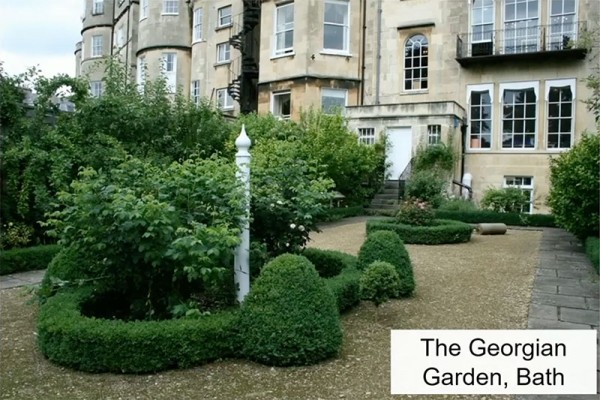
Figure 22. Georgian Garden in Bath
But the cool thing is that those are original features. It had been covered by fill when they excavated the kitchen, and somebody at the archeology service said, "Hey, let's look underneath there before we dig it up," and this was all there. Even that pole they know—which is a honeysuckle pole—they could see the post hole; like in archeology, you see that.
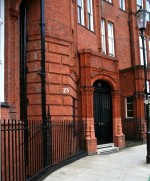
Figure 23. 23 Hans Place, London
So, Austen would have known those kinds of gardens in Bath, London as well, when she visited her brother, Henry, who lived in London. So, this is one of his houses [Figure 23]. Sadly, his garden, which she called quite a love and how much she enjoyed going into it—that was swept away. They put a road through it. But the center square, those garden squares in the middle of London, is still the same. And it's private and locked, just like it would have been in those days. So, this is something I managed to take through the bushes [Figure 24].
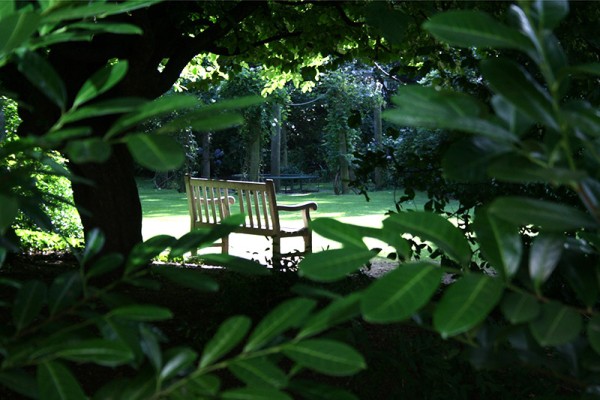
Figure 24. Hans Place Square
Breckyn: That's funny. Let's talk about the manor houses.
Kim: Okay, yes. To me, she knew quite a few manor houses. Her brother had two great estates, Godmersham and—but everyone wonders what's Pemberley based on. Some people say Chatsworth [Figure 25], and, indeed, if you look at Austen's description, she says that Pemberley is 10 miles around. Well, Chatsworth, I believe, was 9, and Blenheim was 12 miles around [Figure 26], so Pemberley is right up there. So, every time I look at pictures from that, to me—I'm just going to go, "This is Pemberley". So there.
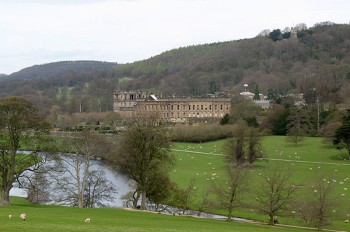
Figure 25. Chatsworth ©Paste at English Wikipedia, shared under Creative Commons Attribution-Share Alike 3.0 Unported license |
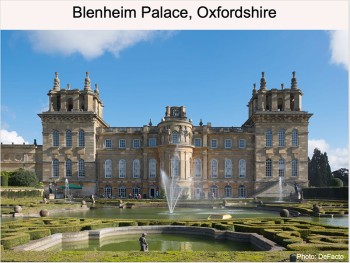
Figure 26. Blenheim Palace ©DeFacto, shared under Creative Commons Attribution-Share Alike 4.0 International license |
Breckyn: Well, and Chatsworth is the one in the 1995 movie, right?
Kim: Well, the one with Colin Firth, they used Lyme Hall, but the Keira Knightley version, they used Chatsworth.
Breckyn: Oh, okay. All right. So, I got them confused. Chatsworth is from the 2005 version.
Kim: Right. But I always look at Blenheim Palace here, like, there's a garden. So, when I think of the description of the Austens and the Gardiners—I mean, not the Austens—Elizabeth Bennet and the Gardiners wandering the grounds—here's a similar map from 1789 [Figure 27]—and I think, "Okay, let's just erase that and say Pemberley."
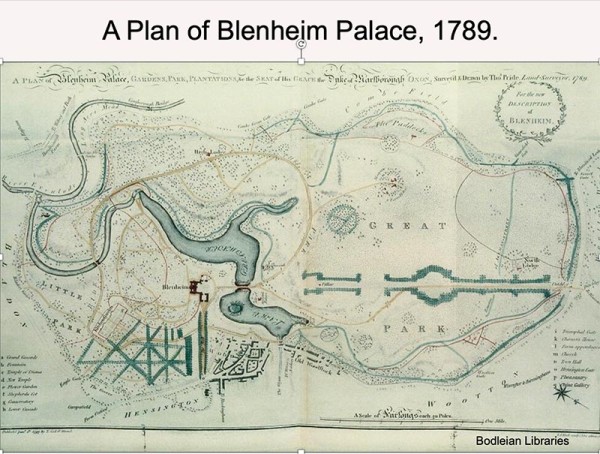
Figure 27. 1789 Plan of Blenheim Palace
And so this is where you think from every window there are beauties to be seen. I mean, no wonder she gets there and she's thinking just a little bit, possibly regretfully, "Of this, all this I might have been—"
Breckyn: "To be mistress of Pemberley would be something."
Kim: And then, in her real life, we know she visited Adlestrop Park, for example, and Stoneleigh Abbey, where I did a lot of touring. Mrs. Austen, Jane's mother, was a Leigh. So, this is Stoneleigh Abbey, and her cousins owned this [Figure 28]. This is an example of where the garden is there they are using, and here it is in 1795, so as it would have looked when Austen was there [Figure 29]. And this is Humphry Repton's before and after, so this is the way it was, and this is how he said it could have been [Figures 30 and 31].
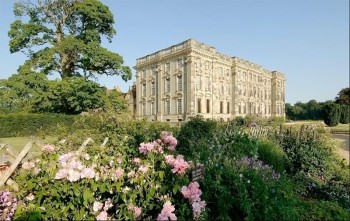
Figure 28. Stoneleigh Abbey Figure 28. Stoneleigh Abbey Figure 28. Stoneleigh Abbey Figure 28. Stoneleigh Abbey Figure 28. Stoneleigh Abbey Figure 28. Stoneleigh Abbey Figure 28. Stoneleigh Abbey Figure 28. Stoneleigh Abbey |
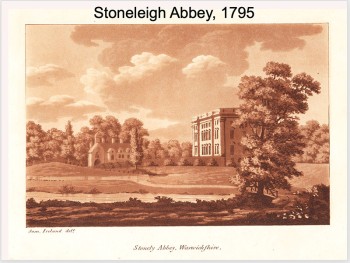
Figure 29. Stoneleigh Abbey, 1795 |
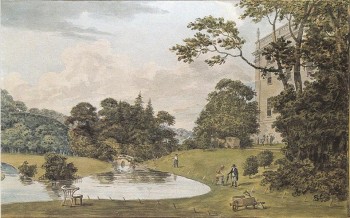
Figure 30. Stoneleigh Abbey "before" proposed landscape renovation. From Humphry Repton's Red Book for Stoneleigh Abbey. |
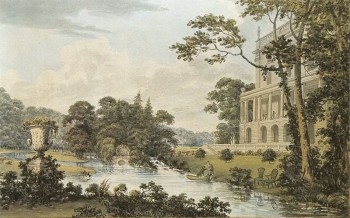
Figure 31. Stoneleigh Abbey "after" proposed landscape renovation. From Humphry Repton's Red Book for Stoneleigh Abbey. |
Breckyn: Okay, I would say that's improved.
Kim: Yeah, it's the improvement of the estate. And they didn't take up all his ideas, but I will show you, three years after the Austens were there, they did move the river.
Breckyn: Oh, really?
Kim: Yes. Because it's more picturesque, and you can see the sheep out there being picturesque in the distance. That's a whole other talk, talking about picturesque and clumps of three sheep, if you can get it. No, really, when people visited the gardens, they would suggest you send your workers out, and, if possible, get the animals to stand in clumps, groups of three.
Breckyn: That is so funny. I remember, I think, again back to the 1996 Sense and Sensibility, I think it was Ang Lee, the director, or somebody who worked on that film, was like, I am never working with sheep again. They're so obnoxious. Because they were always trying to get them serenely chewing grass in the background, and they would just mess up the shot every time. And so, I think it's actually really annoying to try and herd sheep where you want them to go.
Kim: Well, and there's hysterical—I just love reading the garden books of the time because mostly they're just funny to me. These people had too much money and time on their hands, but they would say, "Send out your workers, preferably dressed as European peasants or something, or in white". And if they were in white, you would have them stand where you wanted your eye to be drawn, and away from some, perhaps quite a little bit more, unsightly area.
Breckyn: So, they really are—they're just like props or scenery. That's so Marie Antoinette. No wonder they chopped her head off, right?
Kim: You know, I think the English were lucky that the average Brit was a little more phlegmatic. And they weren't as poor.
Breckyn: Oh, yes. Well, that leads me to a question I wanted to ask, because the servant class is often pretty invisible in Austen's novels, but can you tell us a bit more about the responsibilities of a Regency-era gardener? Apparently, being white scenery in the background is one of their responsibilities? But maintaining the grounds at an estate like Pemberley seems like a really enormous undertaking.
Kim: Oh, exactly. I think what people don't realize—well, actually, maybe you do—how many servants were needed to run a household—one of the great households of the time. Because it's like if you go to some grand estate now where it's a hotel—it's the same thing. You need innumerable indoor servants, outdoor servants. The Austens—at their own house, they had two indoor—a cook, an indoor maid—and an outdoor man who sometimes would also wait at table. He would be doing the gardening. In the cities, they would have what they called a job gardener, someone you hire, just like you might have a lawn care service or a garden service come in now.
But what I notice is in all of the beautiful pictures of gardens of the time, in the background, invisible, as you say, there's always gardeners. They are just part of the scenery. I'm sure that Elizabeth Elliot feels that she did that entire garden, and, really, she just directed it, right?
At a place like Pemberley—Chatsworth had, I think, 100 outdoor workers, a lot of whom were involved in the farming and the woodlands, but they had 30 workers just for the pleasure grounds alone. So, that would probably keep your garden up. I'd be grateful just to get a part-time worker. Women and children often were hired from the village to do the weeding during the season. This scene I'm showing is the mulberry picking [Figure 32]. This is what you were talking about: Cassandra tried to grow mulberry trees at Chawton Cottage. General Tilney talks about—or Catherine Morland sees that General Tilney appears to have an entire parish at work in his gardens—his acres and acres of kitchen garden. So, he's not only supplying the food for his family, for the household, but he's selling it as well. So, those 100 pines that he produces—100 pineapples—he's selling those for like a guinea a piece.
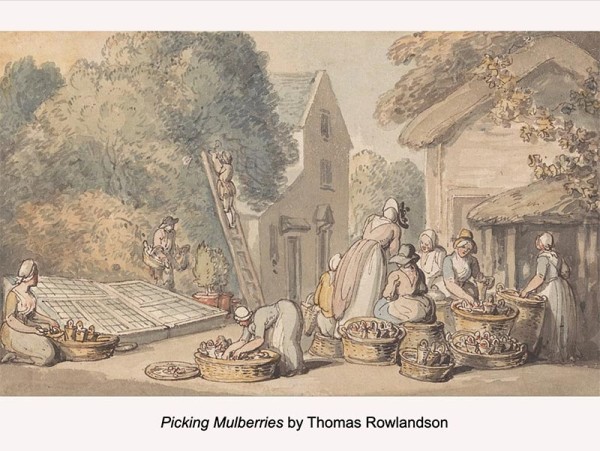
Figure 32. Picking Mulberries
Breckyn: I don't think I knew until right now that they were talking about pineapples in Northanger Abbey. I think I assumed pine trees. I don't think I ever thought about it. You're illuminating so many things for me today, Kim. That's great.
Kim: Well, I hope—I know where I'm glossing over things. But yeah, this is the fun part, isn't it, with Austen—no matter how deep you get in, there's some new thing. Lately, I've been listening to audiobooks of them, and there's always something new. I'm laughing out loud in my car as I drive along. People probably wonder what's wrong with me. But then there's something like, yeah, pinery. No, it's a hothouse, not just a greenhouse, but a hothouse with successive peat beds for growing pineapples because England, right?—the climate. And when you got done, you would have a fruit that you could sell in the market for possibly about $100, depending on the time.
Breckyn: I knew they were hugely popular and a status symbol. And we had Janine Barchas on a little while ago, and she's in the midst of a project where she's researching all the things that you could rent during Regency times. Because you can't afford a pineapple to buy it, but you can rent it, so it’s just on—nobody's going to eat it. It's just going to be on the table so everyone can see, like, "Ooh, they have a pineapple." It’s hilarious.
Kim: There is one novel I read from the time where these nouveau riche people embarrassed—people were horrified because this family had rented the pineapple and these other people sliced into it and ate it. But the rich really were eating them, and you see all sorts of wonderful recipes: ice cream and whatnot. But yes, that symbol of hospitality—actually, they're bragging that they're rich.
Breckyn: Status.
Kim: Now, in America, it was less so—it was much more affordable here. I mean, we grew them here.
Breckyn: We were closer.
Kim: They did import some, but, for the most part, you had to grow them in England. So, it took fuel to heat the hothouses, people to provide the labor—chop the wood, stoke the fires. There's a succession of steps you went through, a lot of insect problems, and so, in Austen's day, it still was very, very expensive. Like I said, maybe a guinea apiece you sometimes see them sold for, so 100-ish. So that's what General Tilney is boasting about. He had 100 of them.
Breckyn: Now I need to go back and read that scene and replace the pine trees in my mind with pineapples; so that'll be a completely different interpretation. That's awesome. I think we only have time for one more question. Can you explain follies and hermits to me? Would rich people actually hire hairy strangers to live on their property, and whyyyy?
Kim: Yes, I know, because you're thinking of the scene in Pride and Prejudice, where Lady Catherine notices that they have a prettyish kind of a little wilderness, and Mrs. Bennet says, "Yes, take and show her ladyship the hermitage" [sic], right?
Breckyn: Yes. What is that?
Kim: You would have decorative structures in your garden. If you had to have one structure, you would have a hermitage. And yes, there were people who actually would hire—you see advertisements of the time—actually hire a person or try to hire a person to sit in there and, I guess, surprise the visitors. These were parts of follies. So, for example, like this one here, this is a Gothic seat at Stoneleigh Abbey, a rustic seat [Figure 33]. Here's a grotto at Houghton Lodge, although that was never usable [Figure 34]. It was just full of bats. But this is an example of a hermitage, a sort of rustic little hut [Figure 35].
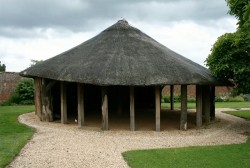
Figure 33. Rustic Seat at Stoneleigh Abbey |
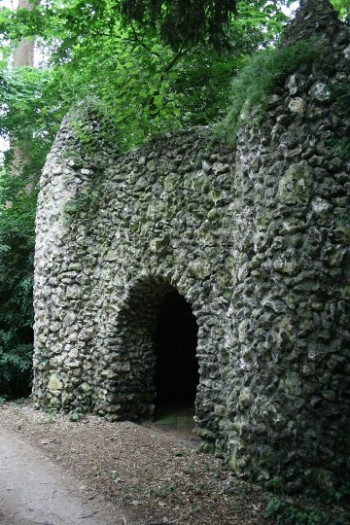
Figure 34. Grotto at Houghton Lodge |
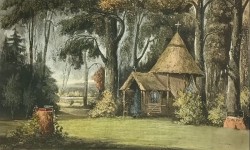 Figure 35. Frogmore Estate Hermitage Figure 35. Frogmore Estate Hermitage |
Breckyn: It looks fairytale-ish.
Kim: It is. They tried everything—they tried to make it to the imagination. So, you'd have Grecian temples next to a fake ruin next to a little hut like this. And you were supposed to think that this was the site of some religious ascetic who was in there contemplating mortality. And even if they didn't hire someone, you would often go in there with these stacks of books on mortality, and maybe a skull or something that you contemplate. It's all just meant to evoke poetry and thought and deep, soulful reflections. I don't think Mrs. Bennet actually hired one because people had the worst time keeping hermits. They would advertise—they'd say, "We'll give you, like, several hundred pounds if you can stick this out for seven years and not cut your hair, not cut your nails, not bathe, interact with the visitors as they walk along."
Breckyn: What kind of person responds to that want ad, right? You're going to get some weirdos.
Kim: Well, like this one at Painshill—I'm showing a picture of Painshill Hermitage [Figure 36]. This is the kind of fellow they wanted. This was a real hermit [Figure 37].
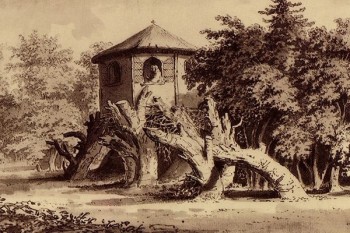
Figure 36. Painshill Hermitage |
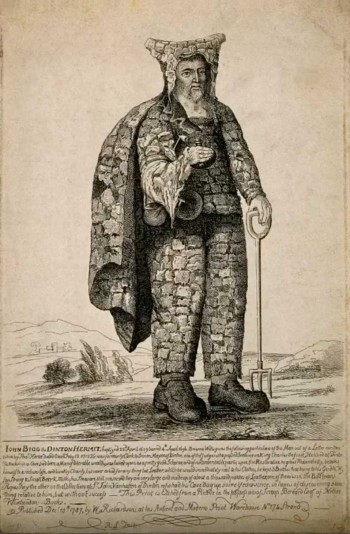
Figure 37. John Bigg, Hermit of Dinton |
Breckyn: Can you describe that for our listeners?
Kim: He is wearing something cobbled together with patched—just like little bitty patched bits of hide, and—I don't know, I imagine mouse hide, but probably bits of fabric. This man was a real hermit. This is the hermit of Dinton, John Bigg. But this is what everyone had in their brain when they were thinking, could they hire someone to pretend to be this? They got to be such a silly thing, they made a play out of it, where a guy says he's going to be a hermit to hide from the debt collectors or he's going to take one of those ads. But the one at Painshill here—they hired a guy, he agreed to do it, and three weeks later they had to fire him because they kept finding him at the pub drinking.
Breckyn: What a funny, strange little bit of history. I love that. There's so much that we didn't get around to, Kim. This was so fun, though. Thank you for coming on the show today.
Kim: I think that, really, it's all covered in the novels themselves, right?
Breckyn: Well, where can listeners go to learn more about your work? You said that your garden book is out of print, so I cannot get it.
Kim: I think so, yes. My website is kimwilsonauthor.com
Breckyn: That's wonderful. Well, thank you for this wonderful conversation. I had a lot of fun.
Kim: I did, too. Thank you so much for having me.
![]()
Breckyn: Hello, dear listeners. I just wanted to ask you a favor. If you've enjoyed listening to Austen Chat, please consider giving us a five-star review on Apple Podcasts and leave a comment saying what you like about the show. The more positive reviews we get, the more people will see and hear about the podcast, and the more Austen fans we'll find to join our community. Though Emma Woodhouse may have disagreed, I side with Mr. Weston. One cannot have too large a party or too many Janeites.
As a final reminder, JASNA is now on YouTube! So be sure to follow us there, as well as on Instagram and Facebook, for updates about the podcast and new episodes. And if you have any comments, questions, or suggestions, please send us a line at our email address, podcast@jasna.org.
[Theme music]
